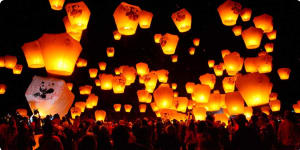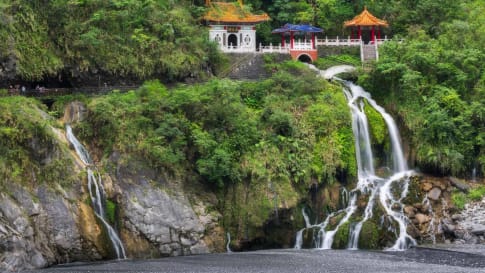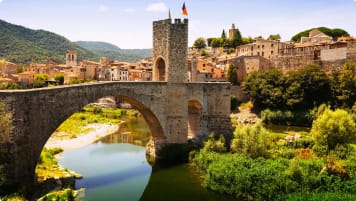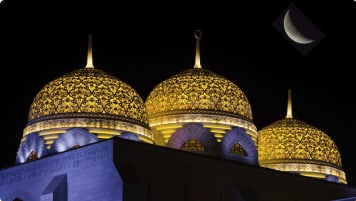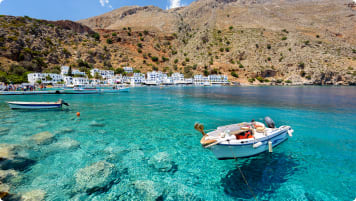Taiwan Lantern Festival small group tour
A small-group tour designed for senior couples and solo travellers to Taiwan. Timed to coincide with the Lantern Festival, held annually on the first full moon of the lunar calendar, this journey highlights one of the world’s most enchanting celebrations. Among the festival’s many events is the Pingxi Sky Lantern Festival, where thousands of glowing lanterns are released into the night sky.
Our Taiwan Lantern Festival program also explores Taipei, including the iconic Taipei 101 Tower, while giving travelers the chance to experience both the city’s modern highlights and its festive traditions.
From $6,245USD
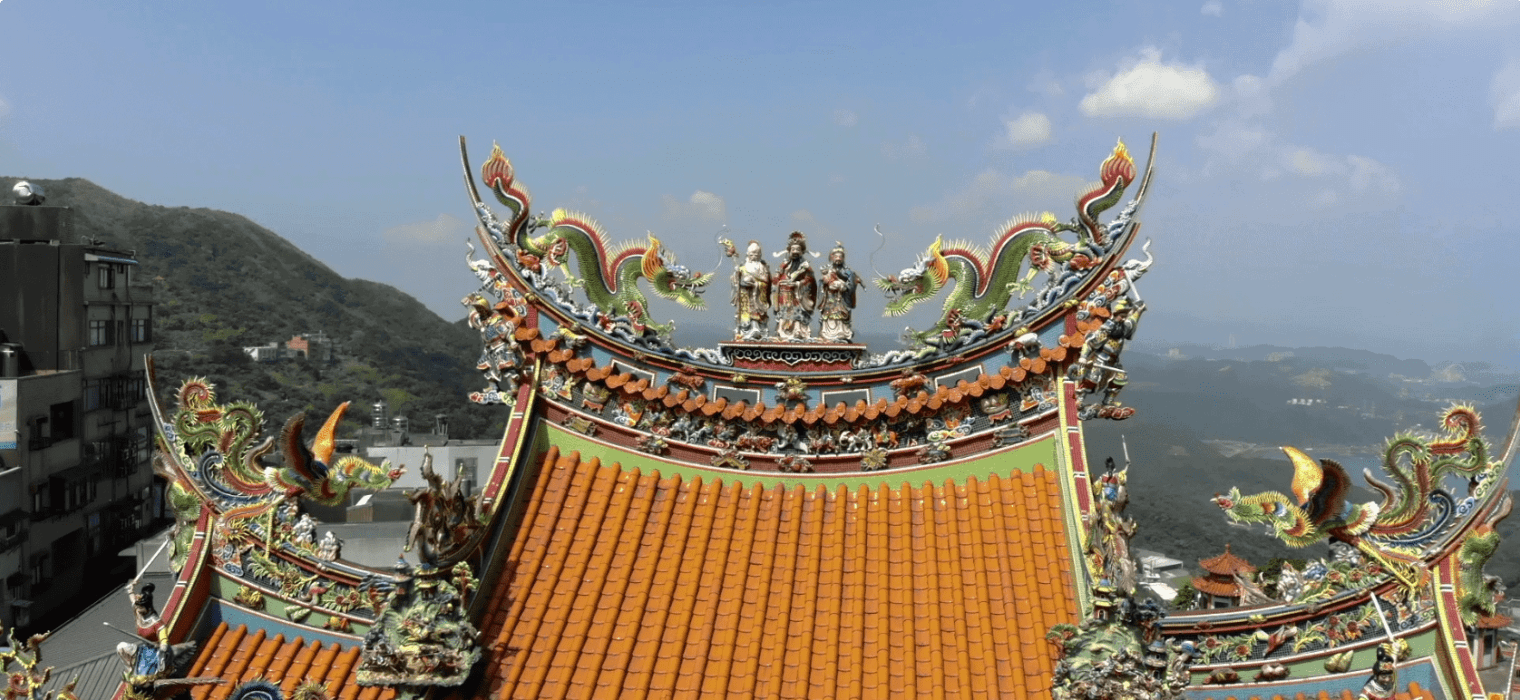
Highlights
- 1. Visit the Pingxi Sky Lantern Festival in Taiwan.
- 2. View the treasures of the National Palace Museum.
- 3. Explore the culinary delights at Raohe Night Market.
- 4. See the natural beauty of Sun Moon Lake and stay in Taiwan’s most iconic hotel, the Lalu in Sun Moon Lake.
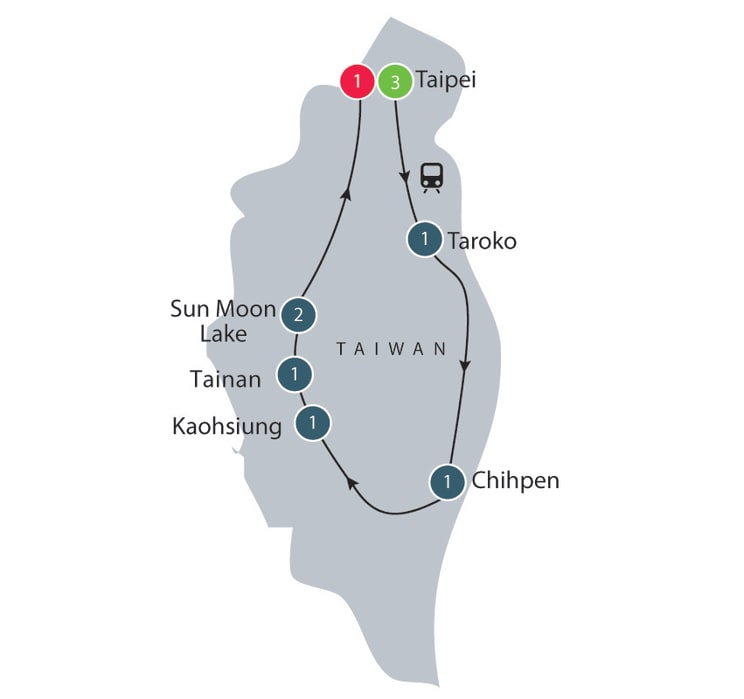
Departure Dates
| Departure Date | Price |
|---|---|
| 01 March 2026 Ends 11 March 2026 • 11 days $6,245 Twin $7,435 Single Pre-guaranteed | Selected |
| 07 February 2027 Ends 17 February 2027 • 11 days $6,606 Twin $7,766 Single Available |
Small group tours Taiwan | Taiwan Lantern festival
Odyssey offers easy, convenient, and relaxed escorted small group tours across Taiwan and beyond into Asia. We explore Taiwan's fairy-tale sculptured natural beauty, its ancient heritage, and world famous city and museum, all with some truly spectacular scenery along the way. This and more is all waiting to be explored on one of Odyssey’s small group tours of Taiwan, designed for the senior traveller, and led by experienced, and enthusiastic like minded people.
The Taiwan Lantern festival small group tour takes in amazing cultural festivals, temples and shrines. You will witness breathtaking natural landscapes, bustling night markets, magnificent cuisine and hospitable people. Join us on this unforgettable educational experience.
The fully escorted Taiwan Lantern festival small group tour is for 11 days with a maximum of 14 participants. The program leader draws on professional guides to share their knowledge of the culture and history as well as the natural beauty of Taiwan.
Small group tours Taiwan Highlights
Our small group tour includes a stop in Taipei for a city tour with its impressive Taipei 101 Tower. You visit the National Palace Museum, which houses the world’s largest collection of Chinese art. Whilst touring the island you also visit a local village and enjoy a performance of traditional dancing illustrating their mythical origins.
We spend a morning at Yehliu Geo-Park on the island’s north coast, strolling around its famous rock formations. Here we will view the beautiful scenery of the lunar-like landscape and rock formations. After a lunch break we drive up into the hillside villages of Chiufen which were once a gold mining town. The gold is now gone but the quaint old villages of closely packed houses, clinging to steep mountainsides, still offer enchanting scenery and fascinating glimpses into past lifestyles.
Highlights also include a tour of Taipei City. Here we take in the Grand Hotel, built on the instructions of Chiang Kai-Shek primarily to house visiting foreign dignitaries. It is the world’s tallest building of classical Chinese design. We will also see the Chiang Kai-Shek Memorial Hall, which includes the National Theatre and National Opera House within its grounds.
Natural Wonders
The Taiwan small group tour also includes many of Taiwan's natural wonders; from Taroko Gorge, one of the seven wonders of Asia, to Sun Moon Lake, Taiwan's largest lake. We also visit Kenting National Park for a walking tour. The park has 60 kilometres of coral-rimmed shoreline. The East Coast National Scenic Area stretches for 170 kilometres.
During the tour, accommodation is typically in first-class hotels, including the Lalu Hotel, which has been voted among the top 50 resorts in the world.
This Taiwan small group tour is suited for the mature-aged or senior couple or solo traveller.
Note: Due to the 7.2 magnitude earthquake in April 2024, the Taroko Gorge National Park suffered significant damage to its infrastructure including roads, trails, and visitor facilities. Our itinerary will be adjusted as required until the park is fully operational.
Get in Touch about Odyssey Traveller's Taiwan Tours
For more details, click the ‘Top 5’ or ‘Itinerary’ buttons above! If you’re keen to experience this tour, please call or send an email. Or, to book, simply fill in the form on the right hand side of this page.
Our article Questions about Taiwan may also help you as you finalise your travel plans.
Gallery
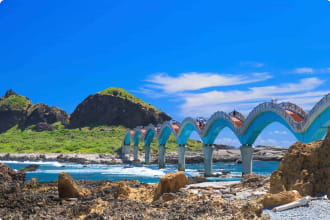
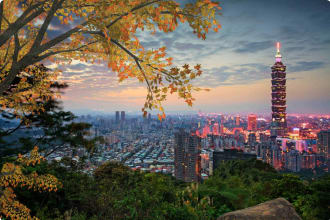
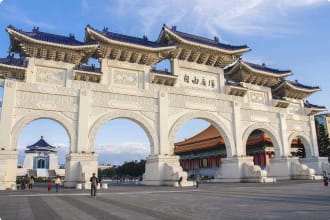

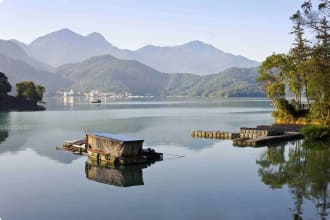
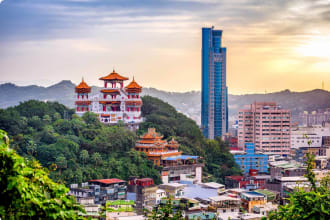
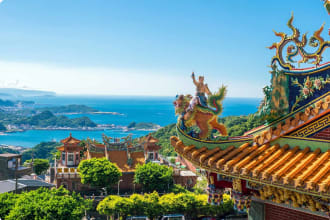
Itinerary
11 days
Day 1: Taipei
Accommodation: 3 nights at Caesar Banqiao or similar
Today we will arrive in Taipei and come to the hotel individually. We will meet our tour leader in the late afternoon in the hotel lobby for a briefing and welcome dinner.
(D)
Day 2: Taipei
Accommodation: Caesar Banqiao or similar
Today will be one of the highlights of our trip as we attend the Lantern Festival, or as it is called in Chinese, the Shang-Yuan-Jie.
On our day trip to Pingxi we’ll first pause at the hillside villages of Chiufen. Both the village of Chiufen and the neighbouring township of Jinguashi in Taipei County were once gold mining centres. These quaint old villages of closely packed houses cling to steep mountainsides, offering enchanting scenery and fascinating glimpses into past lifestyles.
In the afternoon, we continue to Pingxi where we’ll attend the Lantern Festival, in a small township nestled among the mountains, an hour’s drive from Taipei. We will witness thousands of sky lanterns with wishes written on them released together into the night sky on the first full moon of the Chinese New Year. The spectacular Lantern Festival is truly a joy to behold.
(B,L)
Day 3: Taipei
Accommodation: Caesar Banqiao or similar
We will embark on a full-day tour of Taipei. We will start our exploration with a visit to Chiang Kai-shek Memorial Hall, a significant landmark which was built in 1980 to commemorate former Taiwan President Chiang Kai-shek.
Next, we visit the National Palace Museum, which is home to the world’s largest and finest collection of Chinese art, spanning 5,000 years of Chinese history. If time allows, we will also visit contemporary Chinese art master Chang Dai-ch’ien’s Memorial Residence.
After lunch, marvel at the modern architecture of Taipei 101 (excluding observatory deck access) before indulging in the culinary delights at Raohe Night Market and paying a visit to the nearby Tsiyao Temple.
(B,L,D)
Day 4: Taipei - Yiln - Hualien
Accommodation: 1 night at Lakeshore Hotel Hualien or similar
After breakfast, we’ll make our way to Hualien, via Yilan.
We’ll stop to visit Yilan National Centre for Traditional Arts, located beside the beautiful Dongshan River. The centre offers organized displays of art and performances of culture and art.
Our next stop is at Langyan Museum, an exhibition space designed to showcase the unique topography of Yilan, including the Lanyang Mountains, the plains, and the ocean.
We continue on via the impressive Qingshui cliff before arriving at our accommodation in time for dinner.
Note: The visit and stay at Taroko Gorge has been removed for 2024/25 as the park was severly impacted during the 7.2 magnitude earthquake in April 2024 and most of its infratrucure has been compromised.
(B,L,D)
Day 5: Hualien - Chihpen
Accommodation: 1 night at Hoya Hot spring Chihpen or similar
In the morning we depart Hualien and travel to Chihpen via the coastal way.
We’ll make a few stops along the way to appreciate the local scenic beauty.
We’ll pause at Sansientai, a headland facing a small island in the sea. The three huge rocks that make up the island’s most prominent feature have given rise to a local legend that three of China’s Eight Immortals once landed there; hence the name of the island, which means “terrace of the three immortals.” The island was once connected to the headland by a neck of land which has been eroded away; it is now connected by a red, scalloped footbridge, and the island has a network of footpaths for viewing its geological features such as potholes and sea-eroded caves and trenches, as well as rare coastal vegetation.
Another stop along the way will be at Baxian Cave, located in the north of Hua Tung Mountain by the coast of Changbin Township. “Baxian” (eight deities) are famous Chinese deities. Fogs drift perpetually around the caves and the interior is damp and misty.
We arrive late afternoon in Chihpen and have some time to enjoy the hot springs and rest before dinner at the hotel.
(B,D)
Day 6: Chihpen - Kaohsiung
Accommodation: 1 night at Grand Hi-Lai Hotel or similar
After breakfast, we will head for Kaohsiung, which is Taiwan’s second largest city and the largest industrial harbour in Taiwan. It is also the second busiest port in Asia.
We’ll visit Cijing Island in the morning and explore Foguanshan in the late afternoon, home to the beautiful Fo Guang Shan Buddha Museum.
(B,D)
Day 7: Kaohsiung - Tainan
Accommodation: 1 night at The Place Tainan or similar
Today we will drive to Tainan, which is the ancient imperial capital. We will see the Chihkan Tower, which is known originally as Fort Provintia, and we will also see the Fujian-style Koxinga Shrine. We’ll also visit Anping Castle and Anping Old Street, immersing ourselves in the rich history and culture of Taiwan’s oldest city.
(B,L,D)
Day 8: Tainan -Sun Moon Lake
Accommodation: 2 nights at Lalu Sun Moon Lake or similar
Today we will travel to the beautiful resort of Sun Moon Lake. Its name derives from the shape of the lake–the northern part of the lake is in the shape of the sun, while the southern part resembles a crescent moon.
En route we’ll stop to visit National Palace Museum (South Branch) before reaching our accommodation.
Tonight we will stay at the one of the top 50 resorts in the world: the tranquil Lalu Resort. It was designed by award-winning Australian architect Kerry Hill. The hotel, which overlooks Taiwan’s largest lake and features an impressive mountain backdrop, was the place where Chiang Kai-shek entertained his overseas dignitaries. The guest house was painstakingly relocated, brick by brick, into the Garden of Lalu and is now a museum commemorating Chiang Kai-Shek’s era.
(B,D)
Day 9: Sun Moon Lake
Accommodation: Lalu Sun Moon Lake or similar
Today we’ll visit the Assam Tea Factory and the Holy Monk Shrine, dedicated to Buddhist monk Xuanzang, who led an epic journey from China to India in 629. He returned 16 years later with hundreds of scriptures and scrolls, and had a profound influence on the spread of Buddhism throughout China.
There’s also some time for rest and later in the afternoon we will take a private motorboat ride around Sun Moon Lake. We’ll also visit Wenwu Temple and the vibrant Idashao market.
(B,D)
Day 10: Sun Moon Lake - Taipei
Accommodation: 1 night at Hotel Cham Cham or similar
After breakfast, we will continue our journey to Taipei. On the way, we will stop at Ci Lake, with its clear waters mirroring lush greenery we can enjoy a peaceful stroll along winding paths and be immersed in the tranquility of the surrounding area.
We continue on to Taoyuan Lantern Festival, a radiant celebration of culture and tradition that illuminates the night with colourful lantern displays depicting folklore and heritage. Amidst the luminous ambiance, we can indulge in street food delights, view traditional performances and engage in interactive activities.
After the festival we travel to our hotel in Taipei where we enjoy a farewell dinner at our hotel.
(B,L,D)
Day 11: Taipei
Our tour concludes after breakfast at the hotel
(B)
Tour Notes
- Due to the earthquake on 3 April 2024, the Taroko Gorge National Park suffered significant damage to its infrastructure including roads, trails, and visitor facilities. Our itinerary will be adjusted as required until the park is fully operational.
- Please note Lantern Festival site gathers large crowds and the group will be standing for long periods of time.
- Tour itinerary is indicative only and is subject to change due to local conditions and date of festival.
Includes / Excludes
What’s included in our Tour
- 10 nights hotel accommodation including breakfast.
- 10 Breakfasts, 5 Lunches, 9 Dinners.
- Travel is in modern, air-conditioned coaches.
- All field trips and associated entry fees as per the itinerary.
- Gratuities and necessary tips.
- Services of a tour leader for the duration of tour.
What’s not included in our Tour
- International airfares.
- Comprehensive travel insurance.
- Items of a personal nature such as telephone calls and laundry.
Participants must be able to carry their own luggage, climb and descend stairs, be in good health, mobile and able to participate in 3-5 hours of physical activity per day, the equivalent of walking / hiking up to 8 kilometers per day on uneven ground.
Book now
Make it a private tour
Easing your journey
Crossing international borders with restrictions
The list of requirements to travel internationally has changed and will continue to change for several years. Odyssey is here to assist you in managing your way through these requirements:
For more information see our Crossing international borders with restrictions page.
Book With Confidence
If less than 30 days before your tour starts you are unable to travel as a result of Government travel restrictions, Odyssey Traveller will assist you with a date change, provide you with a credit or process a refund for your booking less any non-recoverable costs.
See Terms and conditions for details.
Peace of Mind Travel
The safety of our travellers, tour leader, local guide and support staff has always been our top priority and with the new guidelines for public health and safety for keeping safe for destinations around the world, we’ve developed our plan to give you peace of mind when travelling with us.
See Peace of Mind Travel for details.
Reading List Download PDF
Taiwan’s China Dilemma: Contested Identities and Multiple Interests in Taiwan’s Cross-Strait Economic Policy
Syaru Shirley Lin
China and Taiwan share one of the world's most complex international relationships. Although similar cultures and economic interests promoted an explosion of economic ties between them since the late 1980s, these ties have not led to an improved political relationship, let alone progress toward the unification that both governments once claimed to seek. In addition, Taiwan's recent Sunflower Movement succeeded in obstructing deeper economic ties with China. Why has Taiwan's policy toward China been so inconsistent?
Taiwan's China Dilemma explains the divergence between the development of economic and political relations across the Taiwan Strait through the interplay of national identity and economic interests. Using primary sources, opinion surveys, and interviews with Taiwanese opinion leaders, Syaru Shirley Lin paints a vivid picture of one of the most unsettled and dangerous relationships in the contemporary world, and illustrates the growing backlash against economic liberalization and regional economic integration around the world.
Taiwan: A New History
Murray A. Rubinstein
Since its initial publication in 1999, Taiwan: A New History has established itself as the book of choice on the history of Taiwan. Conceived as a cohesive and interconnected set of interpretive and narrative essays, it is the most integrated, comprehensive, and accessible history of Taiwan published in any Western language. The contributors are the very best people in their specialties, drawn from North America, Europe, and Asia. This new edition expands the coverage from where the first edition ended in 1995 to 2006. It includes new material on democratization, party politics, and the independence movement. Collectively, the chapters take the reader from the geographical and climatological setting, through the stages of premodern history and contact with China and the West, through the Japanese occupation, to the successful establishment of a modern state.
Forbidden Nation: A History of Taiwan
Jonathan Manthorpe
For over 400 years, Taiwan has suffered at the hands of multiple colonial powers, but it has now entered the decade when its independence will be won or lost. At the heart of Taiwan's story is the curse of geography that placed the island on the strategic cusp between the Far East and Southeast Asia and made it the guardian of some of the world's most lucrative trade routes. It is the story of the dogged determination of a courageous people to overcome every obstacle thrown in their path. Forbidden Nation tells the dramatic story of the island, its people, and what brought them to this moment when their future will be decided.
Accidental State: Chiang Kai-shek, the United States, and the Making of Taiwan
Hsiao-ting Lin
The existence of two Chinese states―one controlling mainland China, the other controlling the island of Taiwan―is often understood as a seemingly inevitable outcome of the Chinese civil war. Defeated by Mao Zedong, Chiang Kai-shek’s Nationalists fled to Taiwan to establish a rival state, thereby creating the “Two Chinas” dilemma that vexes international diplomacy to this day. Accidental State challenges this conventional narrative to offer a new perspective on the founding of modern Taiwan.
Hsiao-ting Lin marshals extensive research in recently declassified archives to show that the creation of a Taiwanese state in the early 1950s owed more to serendipity than careful geostrategic planning. It was the cumulative outcome of ad hoc half-measures and imperfect compromises, particularly when it came to the Nationalists’ often contentious relationship with the United States.
Taiwan’s political status was fraught from the start. The island had been formally ceded to Japan after the First Sino-Japanese War, and during World War II the Allies promised Chiang that Taiwan would revert to Chinese rule after Japan’s defeat. But as the Chinese civil war turned against the Nationalists, U.S. policymakers reassessed the wisdom of backing Chiang. The idea of placing Taiwan under United Nations trusteeship gained traction. Cold War realities, and the fear of Taiwan falling into Communist hands, led Washington to recalibrate U.S. policy. Yet American support of a Taiwan-based Republic of China remained ambivalent, and Taiwan had to eke out a place for itself in international affairs as a de facto, if not fully sovereign, state.
Why Taiwan Matters: Small Island, Global Powerhouse
Shelley Rigger
Now in an updated paperback edition, Why Taiwan Matters offers a comprehensive but compact introduction to a country that exercises a role in the world far greater than its tiny size would indicate. Leading expert Shelley Rigger explains how Taiwan became such a key global player, highlighting economic and political breakthroughs so impressive they have been called "miracles." She links these accomplishments to Taiwan's determined society, vibrant culture, and unique history. Drawing on arts, economics, politics, and international relations, Rigger explores Taiwan's importance to China, the United States, and the world. Considering where Taiwan may be headed in its wary standoff with China, she traces how the focus of Taiwan's domestic politics has shifted to a Taiwan-centered strategy. All readers interested in Asia and international affairs will find this an accessible and entertaining overview, replete with human interest stories and colorful examples of daily life in Taiwan.
My Fight for a New Taiwan: One Woman's Journey from Prison to Power
Hsiu-lien Lu (Author), Ashley Esarey (Author), Jerome A. Cohen (Foreword)
Lu Hsiu-lien's journey is the story of Taiwan. Through her successive drives for gender equality, human rights, political reform, Taiwan independence, and, currently, environmental protection, Lu has played a key role in Taiwan's evolution from dictatorship to democracy. The election in 2000 of Democratic Progressive Party leader Chen Shui-bian to the presidency, with Lu as his vice president, ended more than fifty years of rule by the Kuomintang (Nationalist Party).
Taiwan's painful struggle for democratization is dramatized here in the life of Lu, a feminist leader and pro-democracy advocate who was imprisoned for more than five years in the 1980s. Unlike such famous Asian women politicians as Burma's Aung San Suu Kyi, India's Indira Gandhi, and Pakistan's Benazir Bhutto, Lu Hsiu-lien grew up in a family without political connections. Her impoverished parents twice attempted to give her away for adoption, and as an adult she survived cancer and imprisonment, later achieving success as an elected politician―the first self-made woman to serve with such prominence in Asia.
My Fight for a New Taiwan's rich narrative gives readers an insider's perspective on Taiwan's unique blend of Chinese and indigenous culture and recent social transformation.
